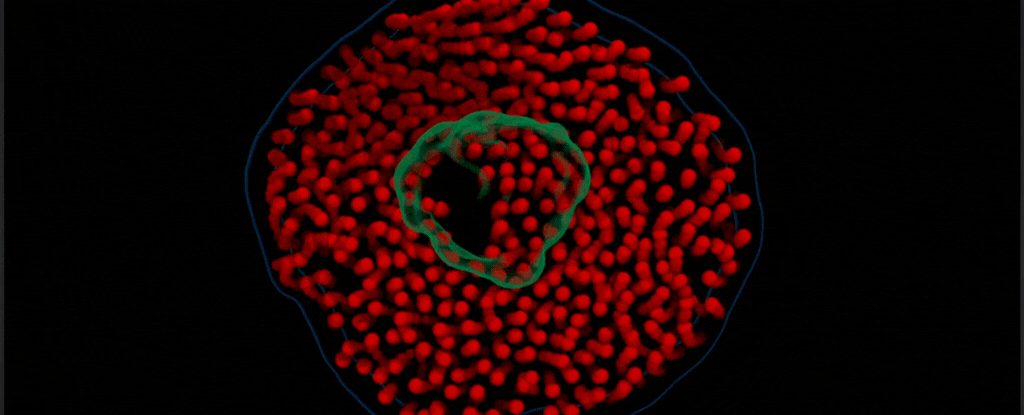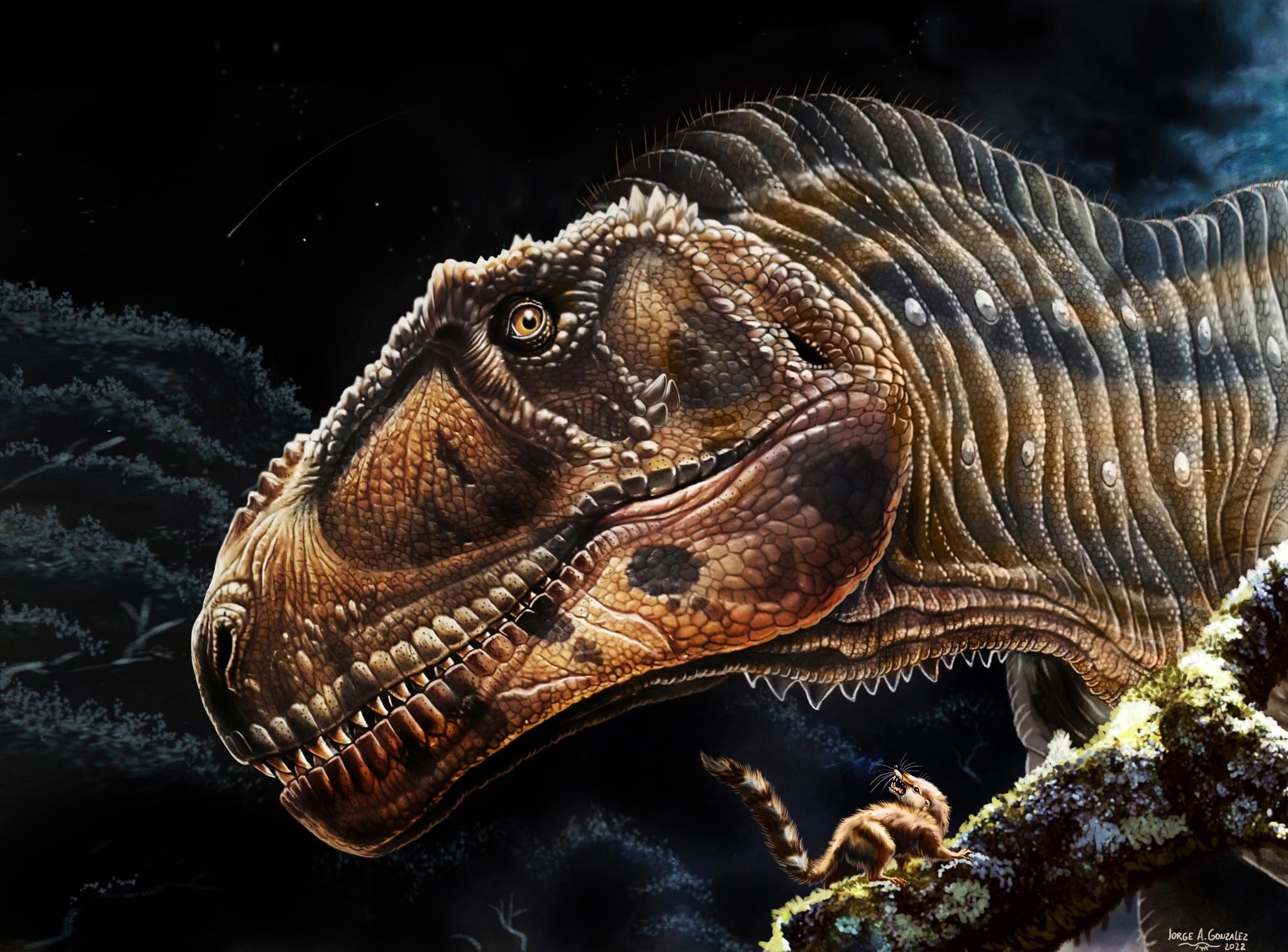Un equipo internacional que incluye a un investigador de Twin Cities de la Universidad de Minnesota ha descubierto un nuevo gran dinosaurio carnívoro, llamado Meraxes gigas (que se muestra arriba), que proporciona pistas sobre la evolución y la anatomía de los dinosaurios depredadores como Carcharodontosaurus y Tyrannosaurus rex. Crédito: Jorge González
El descubrimiento proporciona información sobre la evolución y la anatomía de los grandes dinosaurios carnívoros.
Los investigadores han descubierto un nuevo dinosaurio carnívoro enorme, llamado Miraxis Gegas. El nuevo dinosaurio proporciona pistas fascinantes sobre la evolución y la biología de dinosaurios como carcharodontosaurio Y el Tirano-saurio Rex– En particular, ¿por qué estas criaturas tenían cráneos grandes y brazos pequeños?
El estudio fue codirigido por Peter Makovicki, investigador de la Universidad de Minnesota en Twin Cities, y los colegas argentinos Juan Canal y Sebastian Apisteguia, y se publica en biología actualuna revista de biología científica revisada por pares.
Descubierto inicialmente en la Patagonia en 2012, los científicos han pasado los últimos años extrayendo, preparando y analizando Merax una muestra. Tyrannosaurus es parte de la familia Carcharodontosauridae. Este grupo también incluye terópodos carnívoros gigantes. giganotosauriouno de los dinosaurios carnívoros más grandes que se conocen y una de las estrellas de los reptiles recientemente liberados»[{» attribute=»»>Jurassic World: Dominion” movie.
Though not the largest among carcharodontosaurids, Meraxes was still an imposing animal measuring around 36 feet (11 meters) from snout to tail tip and weighing approximately 9,000 pounds (4,000 kg). The researchers recovered the Meraxes, alongside other dinosaurs including several long-necked sauropod specimens, from rocks that are around 90-95 million years old.
Meraxes is among the most complete carcharodontosaurid skeletons paleontologists have found thus far in the southern hemisphere. It includes nearly the entirety of the animal’s skull, hips, and both left and right arms and legs.
“The neat thing is that we found the body plan is surprisingly similar to tyrannosaurs like T. rex,” said Peter Makovicky, one of the principal authors of the study and a professor in the University of Minnesota N.H. Winchell School of Earth and Environmental Sciences. “But, they’re not particularly closely related to T. rex. They’re from very different branches of the meat-eating dinosaur family tree. So, having this new discovery allowed us to probe the question of, ‘Why do these meat-eating dinosaurs get so big and have these dinky little arms?’”
“The discovery of this new carcharodontosaurid, the most complete up to now, gives us an outstanding opportunity to learn about their systematics, paleobiology, and true size like never before,” said Sebastian Apesteguía, a co-author of the study and a researcher at Maimónides University in Argentina.
With the statistical data that Meraxes provided, the researchers found that large, mega-predatory dinosaurs in all three families of therapods grew in similar ways. As they evolved, their skulls grew larger and their arms progressively shortened.
The possible uses of the tiny forelimbs in T. rex and other large carnivorous dinosaurs have been the topic of much speculation and debate.
“What we’re suggesting is that there’s a different take on this,” Makovicky said. “We shouldn’t worry so much about what the arms are being used for, because the arms are actually being reduced as a consequence of the skulls becoming massive. Whatever the arms may or may not have been used for, they’re taking on a secondary function since the skull is being optimized to handle larger prey.”
The researchers also found that carcharodontosaurids including species from Patagonia evolved very quickly, but then disappeared suddenly from the fossil record very soon after.
“Usually when animals are on the verge of extinction, it’s because their evolutionary rates are quite slow, meaning they aren’t adapting very quickly to their environment,” explained Juan Canale, the study’s lead author and a researcher at the National University of Río Negro. “Here, we have evidence that Meraxes and its relatives were evolving quite fast, and yet within a few million years of being around, they disappeared, and we don’t know why. It’s one of these finds where you answer some questions, but it generates more questions for the future.”
For more on this research, see Giant New Carnivorous Dinosaur Discovered With Tiny Arms Like T. rex.
Reference: “New giant carnivorous dinosaur reveals convergent evolutionary trends in theropod arm reduction” by Juan I. Canale, Sebastián Apesteguía, Pablo A. Gallina, Jonathan Mitchell, Nathan D. Smith, Thomas M. Cullen, Akiko Shinya, Alejandro Haluza, Federico A. Gianechini, Peter J. Makovicky, 7 July 2022, Current Biology.
DOI: 10.1016/j.cub.2022.05.057
The research was funded by the National Geographic Society, Municipalidad de Villa El Chocón, Fundación “Félix de Azara,” and the Field Museum in Chicago.
In addition to Makovicky, Apesteguía, and Canale, the research team included National University of Río Negro researcher Alejandro Haluza; Maimónides University researcher Pablo Gallina; West Virginia Institute of Technology Assistant Professor Jonathan Mitchell; Natural History Museum of Los Angeles County researcher Nathan Smith; Carleton University researchers Thomas Cullen; Akiko Shinya of the Field Museum in Chicago; and National University of San Luis researcher Federico Gianechini.

«Propenso a ataques de apatía. Explorador de aspirantes. Analista ávido. Fanático de Internet. Comunicador»






More Stories
Por primera vez, los científicos capturan en vídeo la danza de las proteínas y las grasas: ScienceAlert
La investigación combina origami de ADN y fotolitografía para acercarse un paso más a los ordenadores moleculares
Brote de sarampión y tos ferina: «Debemos proteger a nuestros niños»